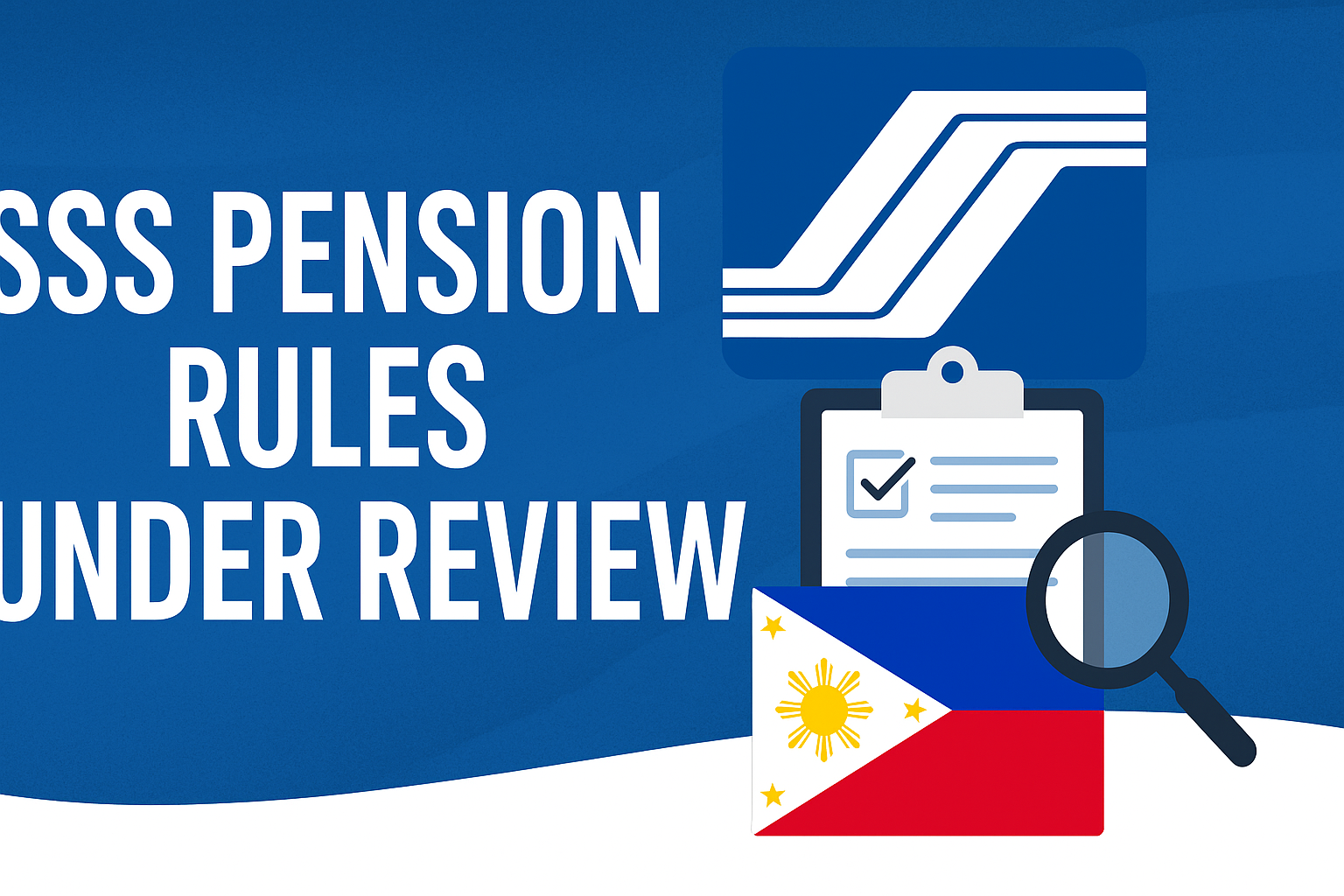The Social Security System (SSS) of the Philippines has launched a full-scale review of pension eligibility policies. This SSS Pension Eligibility Review is the most significant revision since the system’s overhaul in 2018.
It comes in response to shifting demographic trends, longer life expectancies, and growing demands on the pension fund.
As part of this review, new guidelines are being implemented to redefine how Filipinos qualify for their retirement benefits.
These changes are designed to ensure that the SSS pension 2025 framework remains sustainable and fair to all members, especially as the number of retirees continues to climb.
Key Adjustments to SSS Pension 2025 Eligibility Rules
The updated eligibility rules reflect a move toward inclusivity and adaptability, especially for informal sector workers and OFWs. Here are the most crucial changes being introduced:
- Minimum Number of Contributions: Previously set at 120 monthly contributions, the new benchmark is now 180. This aims to encourage long-term participation.
- Age Requirement Clarification: While the retirement age remains 60 (optional) and 65 (mandatory), the rules now emphasize clearer guidelines for early retirement due to disability or hardship.
- Voluntary Contributions for Informal Workers: A new provision allows freelancers, vendors, and gig workers to declare their monthly income brackets to determine adjusted contribution rates.
- Creditable Years of Service: For those with interrupted work histories, the SSS will now count part-time employment and intermittent contributions, provided a minimum continuity ratio is met.
Updated Pension Payout Computation Table
To help members visualize the impact of the 2025 changes, here’s a simplified table showing sample monthly pensions based on contribution history:
| Years of Contribution | Monthly Salary Credit | Estimated Monthly Pension |
|---|---|---|
| 15 years | PHP 15,000 | PHP 6,500 |
| 20 years | PHP 20,000 | PHP 9,800 |
| 25 years | PHP 25,000 | PHP 12,600 |
| 30+ years | PHP 30,000 | PHP 15,700 |
Note: These are estimates; actual pension amounts vary depending on total credited contributions and the average monthly salary credit.
Why This Eligibility Review Matters Now
The SSS Pension Eligibility Review is more than an administrative exercise—it’s a strategic pivot to keep pace with economic realities.
With inflation affecting cost-of-living standards, and more retirees outliving their savings, the 2025 updates aim to realign the system with the financial needs of future pensioners.
There’s also a focus on improving digital access to SSS services. From June 2025, all members will be required to maintain updated online accounts, which will now serve as the primary platform for checking contributions and pension estimates.
Implications for Current and Future Members
For current members approaching retirement, it’s crucial to re-evaluate their total contributions and seek counseling from SSS field offices.
Meanwhile, younger workers are encouraged to begin or resume contributions immediately to take full advantage of the revised pension formula.
OFWs and informal sector participants now have more flexible options to comply with contribution requirements. These efforts align with the government’s push to make the SSS pension 2025 model more inclusive across socio-economic classes.
FAQs
What is the purpose of the SSS Pension Eligibility Review?
The review is aimed at revising outdated rules, improving inclusivity, and ensuring the long-term viability of the SSS pension fund.
How does the new minimum contribution requirement affect members?
Members will now need 180 months of contributions instead of 120, encouraging longer participation and potentially higher pension payouts.
Are the new rules already in effect?
Yes. As of June 2025, all new retirements and claims will follow the updated SSS pension eligibility rules.
